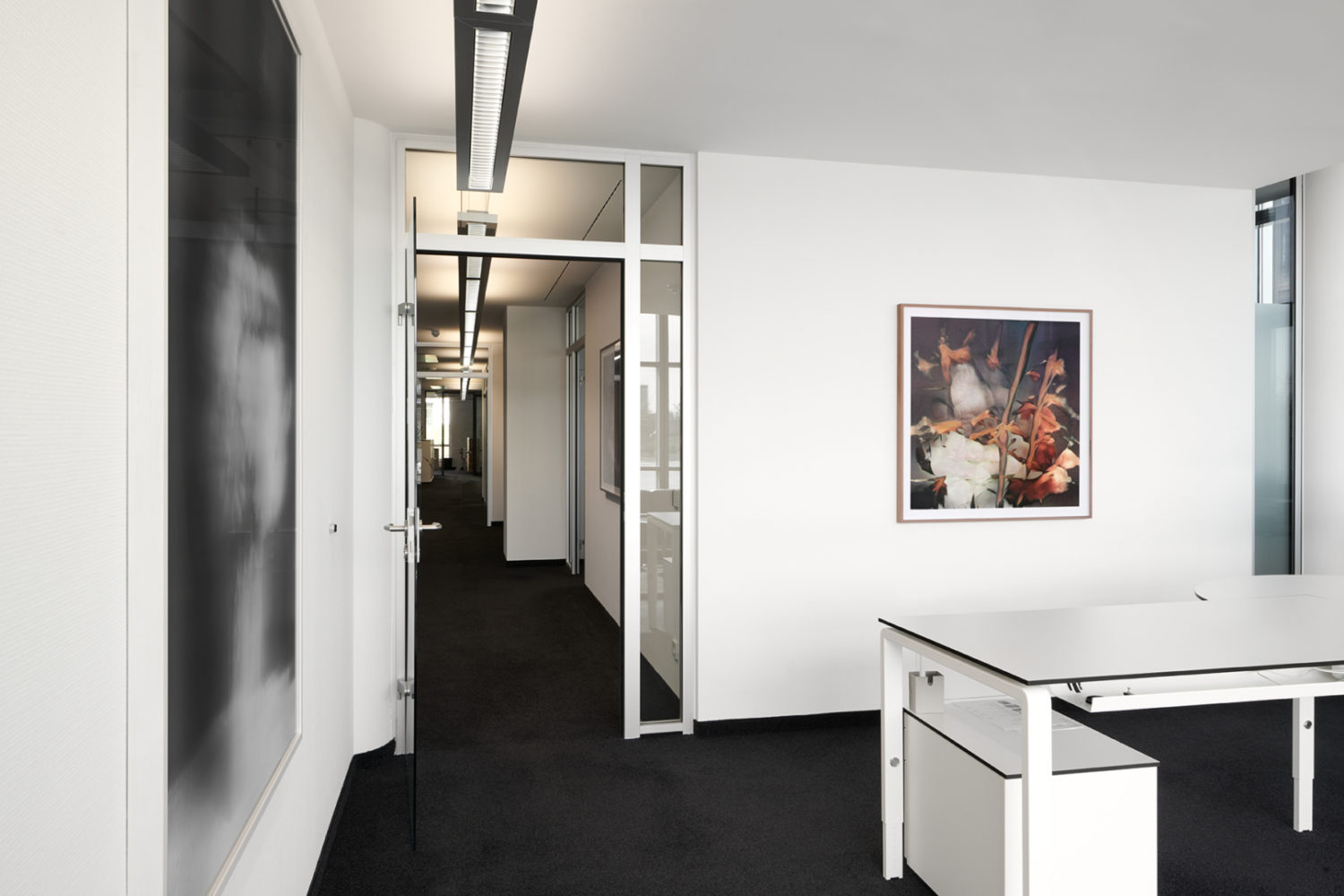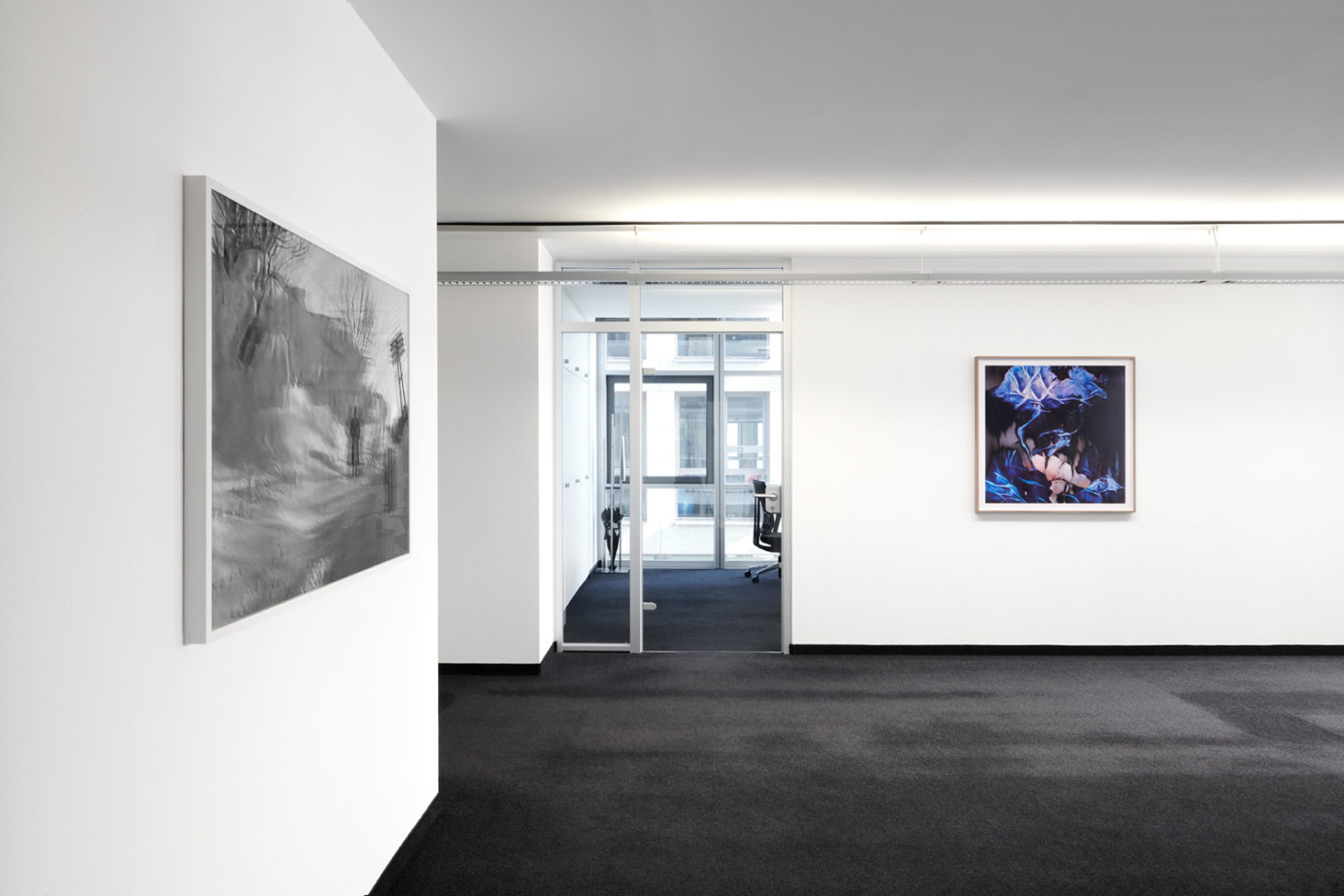Die Künstlerin Ornella Fieres präsentiert von der Kuratorin Tina Sauerländer
In den Arbeiten der Künstlerin Ornella Fieres treffen analoge Fundstücke aus vergangenen Zeiten auf neue Technologien. Fotografien aus persönlichen Nachlässen oder filmisches Archivmaterial der Wissenschaft instrumentalisiert die Künstlerin für ihre eigenen Zwecke. Ihr geht es darum, „vergangene Momente ins Jetzt zu übertragen und die unsichtbaren Prozesse des Digitalen sichtbar zu machen“. Ihre Arbeiten zeigen die Welt von gestern, gesehen durch die Augen der Algorithmen von heute.
Die Grundlage für Ornella Fieres‘ Serie Postcards to M / GAN (2021) bilden Blumenpostkarten aus den 1960er und 1970er Jahren. Sie stammen aus dem Nachlass einer Ost-Berlinerin, den die Künstlerin auf einem Online-Flohmarkt erworben hat. Eine selbstlernende künstliche Intelligenz, ein sogenanntes GAN (Generative Adversarial Network), hat die Motive studiert und kreiert nun eigene Bilder auf Basis des Gelernten. Die Arbeiten veranschaulichen die Sichtweise der Maschine auf die eingegebenen Daten, so eine nüchterne Beschreibung des poetischen und doch irritierend künstlichen Ergebnisses.
GANs lernen zwar selbst, aber dennoch sind sie ein Produkt der Menschen, die die Erkenntnisse der Wissenschaft und Computertechnologie immer weiter erforschen und vorantreiben. Sie symbolisieren den unermüdlichen Entdeckergeist. Die Video-Arbeit An Algorithm for Snowfall (2019) zeigt eine Algorithmus-basierte Rekonstruktion wissenschaftlicher Filme, die die Künstlerin parallel zueinander einmal vorwärts und einmal rückwärts abspielt. Bruchstücke von Bergbesteigungen, mikroskopischen Betrachtungen oder schmelzenden Gletschern erscheinen in Zeitlupe verzerrt. Die Sequenzen thematisieren das verstrickte Verhältnis zwischen Forschenden und ihrer Umgebung. Oft greift der Mensch in die Natur ein, ohne die Auswirkungen seines Handels vorher zu kennen, häufig mit verheerenden Folgen. In der Mitte des Films treffen die beiden Filmspuren aufeinander, laufen für einen Moment synchron, um sich anschließend wieder in ihrer Spirale aufzulösen. Was Fortschritt und was Rückschritt ist, lässt sich in diesem zeitlichen Zerrbild für die menschliche Wahrnehmung kaum sinnvoll erfassen.
Für Inverse Fourier (2021) eignet sich Ornella Fieres Bildmaterialien verschiedener Nachlässe an. Mithilfe der Fourier-Transformation, einem Algorithmus zur Bildkomprimierung, verändert die Künstlerin ihren visuellen Input. Sie greift in die Berechnung ein, entfernt Teile aus dem System, so dass dieses den gewünschten Output nur noch fehlerhaft wiedergeben kann. Das Ergebnis kennt Fieres im Vorfeld nicht, die Folgen ihres Handelns sind ihr unbekannt. Diese Intervention versinnbildlicht den Eingriff des vom Forschergeist beseelten Menschen, der Berge besteigt oder abträgt, die Welt mit elektrischen Kabeln umspannt oder atomare Reaktionen hervorruft, so wie es die Arbeiten der Serie evozieren. Indem die Künstlerin die Störung im System visualisiert, gewährt sie Einblick in die „Denkweise“ des Algorithmus.
Der Titel der Ausstellung wurde der Videoarbeit I create paths that lead to the clouds in which we go (2020) entlehnt, in der eine künstliche Intelligenz aus allen bisher geschriebenen Texten über Ornella Fieres‘ Arbeiten eine poetisch-dystopische Endzeitvision kreiert, die auch ihre hoffnungsvollen Seiten hat. Und so spiegeln Ornella Fieres‘ Arbeiten stets zwei Seiten gleich mehrerer Medaillen wider. Sie beschreiben sowohl die menschliche als auch die computergenerierte Wahrnehmung. Sie vergleichen die Beziehung zwischen Künstlerin und ihren Hilfsmitteln zum einen mit den unbedarften Eingriffen des Menschen in die Natur, zum anderen symbolisieren sie das schöpferische Potenzial ihrer Gemeinschaftsarbeit. Vor allem aber rufen die Werke ins Gedächtnis, dass künstliche Intelligenzen zwar komplexe, aber dennoch von Menschen fabrizierte Erzeugnisse sind, die deshalb vor allem eines reflektieren, nämlich das Menschliche.
LIGHT SHINES THROUGH THE CURTAINS OF TIME
Curator Tina Sauerlaender presents the work of artist Ornella Fieres
In the works of artist Ornella Fieres, new technologies meet analog found objects from times past. The artist instrumentalizes photographs from personal estates and archival material from scientific films for her own purposes. She is concerned with “transferring the past into the present and making the invisible processes of the digital visible.” Her works show the world of yesterday, seen through the eyes of today’s algorithms.
The basis for Ornella Fieres’ series Postcards to M / GAN (2021) are flower postcards from the 1960s and 1970s. The postcards come from the estate of an East Berliner, and were acquired by the artist at an online flea market. A self-teaching artificial intelligence called a GAN (Generative Adversarial Network) studies the postcards’ motifs and then creates its own images based on what it has learned. The works illustrate the machine’s view of the data that has been entered, creating a matter of fact depiction and a poetic yet irritatingly artificial result.
GANs are self-teaching, but they are nevertheless the products of the people who continue to explore and advance knowledge in the fields of science and computer technology. They symbolize the tireless spirit of discovery. The video work An Algorithm for Snowfall (2019) shows an algorithm-based reconstruction of scientific films, which are played in parallel once forwards and once backwards, by the artist. Fragments from mountain climbs, microscopic observations, and melting glaciers appear distorted in slow motion. The sequences thematize the entangled relationship between researcher and their environment. Quite often, humans intervene in nature without knowing the effects their actions will have on the environment, often with devastating consequences. In the middle of the film, the two film clips meet, run synchronously for a moment, and then disappear again into their spirals. In this temporal distortion, progress and regression cannot be meaningfully distinguished by human perception.
For Inverse Fourier (2021), Ornella Fieres appropriates visual materials from various estates. The artist changes her visual input with the help of the Fourier transform (FT), an algorithm for image compression. She intervenes in the calculations, removing parts from the system, so that it will reproduce her selected output incorrectly. Fieres does not know the result in advance, nor the consequences of her actions. This intervention symbolizes the intervention of humans. Those who, inspired by the spirit of exploration, climb or dismantle mountains, encircle the world with electric cables, or produce atomic reactions. This process is exemplified by the works in the series. By visualizing the disruption in the system, the artist provides insight into the “mindset” of the algorithm.
The title of the exhibition was borrowed from the video work I create paths that lead to the clouds in which we go (2020), in which an artificial intelligence creates a poetic-dystopian vision of the end times based on all the texts that have been written about Ornella Fieres’ works to date. This vision also has its hopeful sides, as Ornella Fieres’ works always reflect two sides of the same coin. They illustrate both human and computer-generated perception. On the one hand, they compare the relationship between the artist and her tools with the careless interventions of man in nature. On the other hand, they symbolize the creative potential of her collaborative work. Above all, Fieres’ works remind us that artificial intelligence, although complex, was created by humans. They therefore reflect one thing above all else: human nature.











